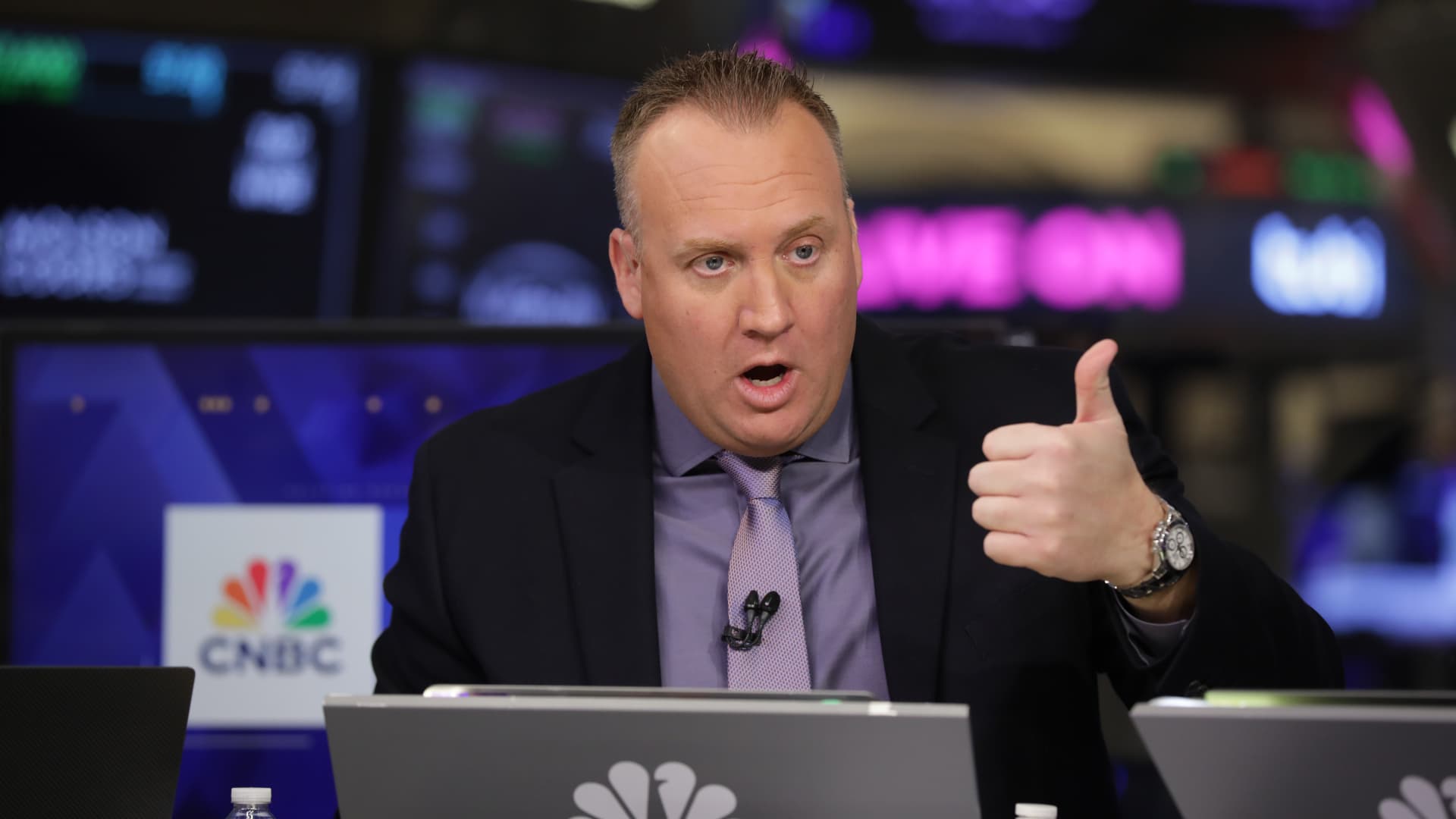(This is The Best Stocks in the Market , brought to you by Josh Brown and Sean Russo of Ritholtz Wealth Management.) Josh here — big winners in the stock market often come from unexpected places. Not many know, for example, that the biggest winner in the stock market over the 25 years ending December 2023 was not Apple or Amazon. It was Monster Beverage Corporation (MNST), which annualized at 37.1% per year throughout the period — a cumulative gain of more than 268,000%, beating every other continually-traded stock in the index over this timeframe. Monster took an existing category and completely flipped the way it was marketed, distributed and sold. When reading Sean’s portion of our write-up today, it reminded me about the need to be open-minded and follow the research, not give in to our pre-conceived notions about companies or industries. We’re featuring Carvana (CVNA) today, a stock that’s known its share of controversy during the relatively short period of time since its IPO in April 2017. The name hit our list of Best Stocks in the Market model and my immediate instinct was “maybe we should skip this one.” But then I realized that’s exactly why we’re keeping this model in the first place — to call attention to the trends that our biases might otherwise make us miss. Carvana may not be your cup of tea or make sense for your portfolio, but it’s a story worth getting to know as the stock approaches its 52-week high. But first, let’s do some sector leadership… Sector Leaderboard As of 5/12/2025 morning, there are 90 names on The Best Stocks in the Market model. The S & P Industrials are now leading the market by headcount, with 20 names from the sector powering ahead. Very few Best Stocks exist currently in materials, real estate and energy, three of the more economically sensitive areas of the market, as of the end of last week. Below we’re showing you the top stocks currently on our list ranked by relative strength. A glance tells you the aerospace names got a boost this week. New addition: Carvana (CVNA) Sean: Carvana’s long term chart literally looks like a roller coaster. The stock last made all time highs during the meme stock era of 2021, alongside names like Peloton, Lucid Motors and the like. When the SPAC bubble popped in 2021 and profitability again became a meaningful metric to Wall Street and retail investors alike, the share price of these companies tanked. Sentiment around these stocks followed. CVNA in particular, was ridiculed for its business model. The thought of putting cars in vending machines was laughable, and the story became a joke, along with its share price. CVNA hit $3.55 a share in December of 2022 after hitting $375 in August of 2022 — more than 99% off all time highs. Whispers of bankruptcy and mismanagement by the company’s founders were in the headlines. The difference between CVNA and everyone else is that they started executing. CVNA is 27% below its all time high and fighting higher. Cathie Wood’s ARK Innovation ETF is 67% below its 2021 high, while both Peloton and Lucid Motors are 96% below their respective highs. CVNA is the fastest growing used automotive retailer in U.S. history (via Carvana). It’s not because they sell cars in a gimmicky vending machine on the side of a highway — CVNA has become the most trusted customer-first e-commerce model for the automotive industry. According to a Gallup poll, 81% of car buyers do not enjoy the process. The auto market is incredibly fragmented. According to Automotive News, 2.3% of market share is taken by the top dealership brand, and 11.1% is the total market share taken by the top 100 dealerships. The fundamentals match the story here. CVNA reported earnings on May 7 — it beat on the top and bottom lines. Revenues were up 38% year-over-year. Net income was up a stunning 6x (from $49 million last year to $373 million this past quarter). Operating margin hit 9.3%, up from 4.4% last year. This is what management had to say on tariffs as it relates to their business: “As it relates to tariffs, I think we’ve heard reasonable arguments that I think are directionally correct that if tariffs drive up car prices, all else constant, that’s bad. And I think we’ve heard reasonable arguments that it would be more likely they would drive up new car prices by more than used car prices. And so it may be a directional benefit to used cars. And it may be a benefit to business models that are able to offer value to consumers, which is a business model that we think we fit in that box.” While CVNA was going over earnings, a closely-watched used car index saw its largest price increase since 2023. Cox Automotive’s Manheim Used Vehicle Value Index — which tracks prices of used vehicles sold at its U.S. wholesale auctions — increased 4.9% year-over-year in April. It’s also important to note this was a 2.7% month-over-month increase — which would be a 32% annualized increase. Automotive prices are going higher, and demand for a value-oriented service offering is in the midst of heating up. Everything is coming together for CVNA and price is reflecting that reality. CVNA is up 34% this year. It is 7% below 52-week highs, above both its 50- and 200-day moving average, and has an RSI of 65. Risk Management Josh: Short-term traders are going to want to watch out for the gap at $255 to make sure trend is intact. If it breaks below that, the 50-day moving average at $211 is in play. For long-term investors, the rising 200-day moving average is a great level for a stop loss, which is right at $205. Bear in mind that this would be a 25% drop so this entry may not be for everyone. DISCLOSURES: None All opinions expressed by the CNBC Pro contributors are solely their opinions and do not reflect the opinions of CNBC, NBC UNIVERSAL, their parent company or affiliates, and may have been previously disseminated by them on television, radio, internet or another medium. THE ABOVE CONTENT IS SUBJECT TO OUR TERMS AND CONDITIONS AND PRIVACY POLICY . THIS CONTENT IS PROVIDED FOR INFORMATIONAL PURPOSES ONLY AND DOES NOT CONSITUTE FINANCIAL, INVESTMENT, TAX OR LEGAL ADVICE OR A RECOMMENDATION TO BUY ANY SECURITY OR OTHER FINANCIAL ASSET. THE CONTENT IS GENERAL IN NATURE AND DOES NOT REFLECT ANY INDIVIDUAL’S UNIQUE PERSONAL CIRCUMSTANCES. THE ABOVE CONTENT MIGHT NOT BE SUITABLE FOR YOUR PARTICULAR CIRCUMSTANCES. BEFORE MAKING ANY FINANCIAL DECISIONS, YOU SHOULD STRONGLY CONSIDER SEEKING ADVICE FROM YOUR OWN FINANCIAL OR INVESTMENT ADVISOR. INVESTING INVOLVES RISK. EXAMPLES OF ANALYSIS CONTAINED IN THIS ARTICLE ARE ONLY EXAMPLES. THE VIEWS AND OPINIONS EXPRESSED ARE THOSE OF THE CONTRIBUTORS AND DO NOT NECESSARILY REFLECT THE OFFICIAL POLICY OR POSITION OF RITHOLTZ WEALTH MANAGEMENT, LLC. JOSH BROWN IS THE CEO OF RITHOLTZ WEALTH MANAGEMENT AND MAY MAINTAIN A SECURITY POSITION IN THE SECURITIES DISCUSSED. ASSUMPTIONS MADE WITHIN THE ANALYSIS ARE NOT REFLECTIVE OF THE POSITION OF RITHOLTZ WEALTH MANAGEMENT, LLC” TO THE END OF OR OUR DISCLOSURE. Click here for the full disclaimer.





